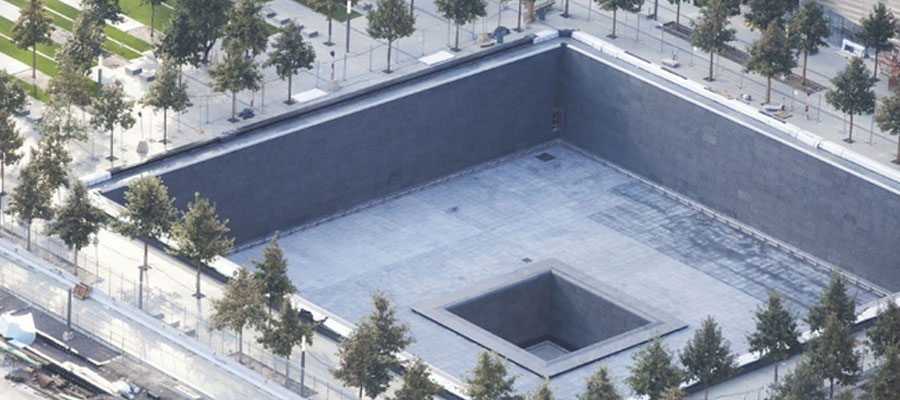In 2003, an international competition was launched to design a memorial at the World Trade Center to honor the victims of the terrorist attacks. The winner of the competition, which received 5201 entries, was an unknown 34-year-old Israeli-American architect Michael Arad, who called his design “Reflecting Absence.” The central design of the memorial was to keep the footprints of the twin towers open to the sky as massive, sunken fountains. Because the competition’s judges thought his design was too simple, they ordered Arad to hire a landscape architect to add more warmth to the design. Arad hired Peter Walker, who added a park-like landscape of 416 swamp white oak trees. As visitors approach the fountains, they will encounter the names of the 9/11 victims carved into a dark bronze parapet along their outer edges. The memorial is designed to lead the visitor from the outer edges of the site through the trees to the fountains and then back to the chaos of downtown Manhattan. The museum, which will be placed between the two foundations, will open in the fall of 2012.The memorial is the first part of the reconstruction of the World Trade Center’s original 16 acres. The 1 World Trade Center Tower, originally called the Freedom Tower, will open in 2013 and will be the tallest building in the United States. Another skyscraper and a transportation hub designed by noted architect Santiago Calatrava should be finished by 2014.
For some time after the opening of the memorial, all visitors will enter the memorial at a single point at its southwest corner. Because the area is still a construction site, visitors will have to obtain free visitors passes for a specific date and time. After more of the construction in the area is completed, the memorial will be accessible from every direction.
The simple beauty of the memorial will undoubtedly achieve the goals of the Memorial Foundation, which include remembering and honoring the victims of both the February 26, 1993, and September 11, 2001 attacks, “respecting this place made sacred through tragic loss,” recognizing “the endurance of those who survived, the courage of those who risked their lives to save others, and the compassion of all who supported us in our darkest hours.” Furthermore, the Foundation stated: “May the lives remembered, the deeds recognized, and the spirit reawakened be eternal beacons, which reaffirm respect for life, strengthen our resolve to preserve freedom, and inspire an end to hatred, ignorance and intolerance.”
Debra Gambrill

